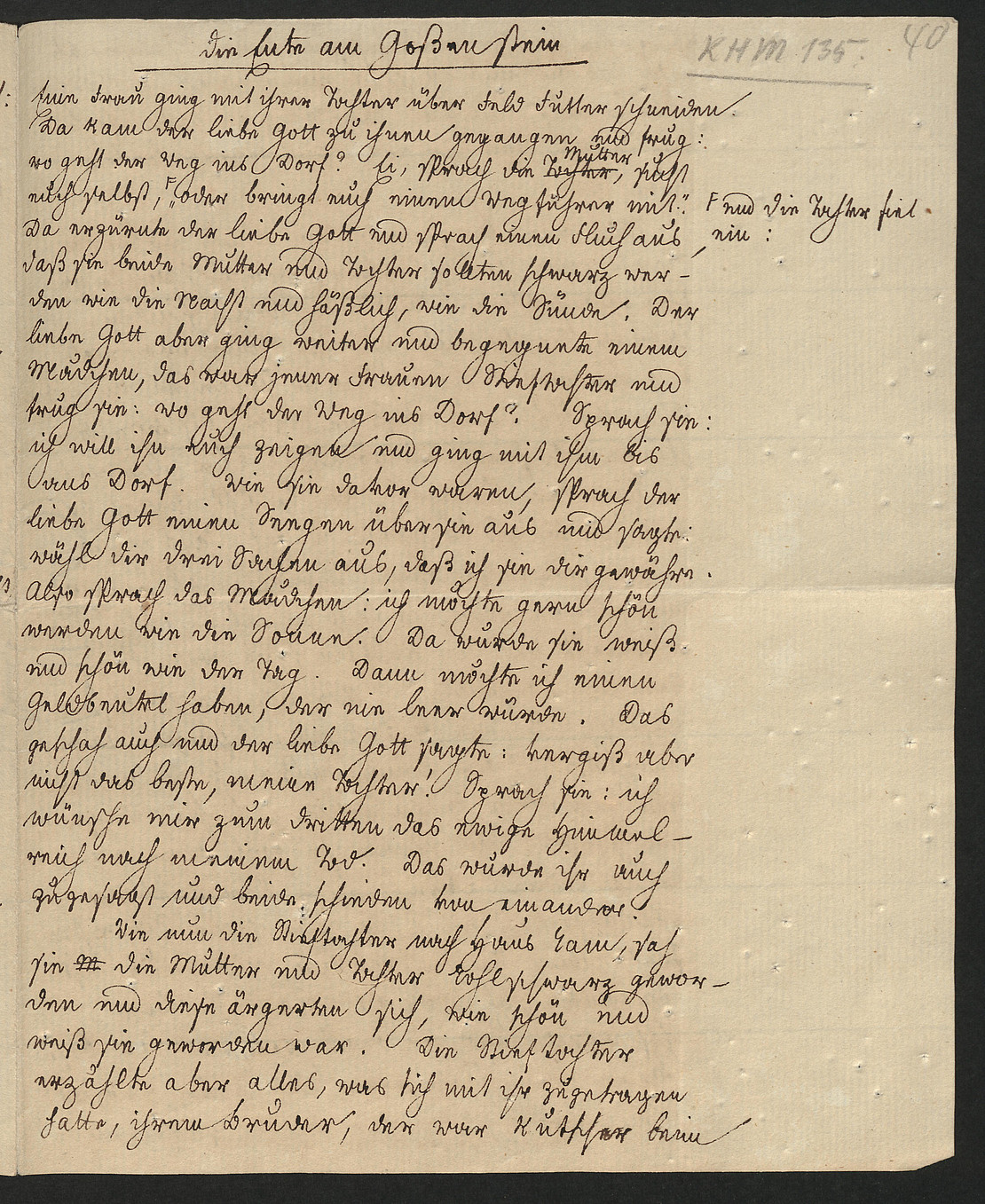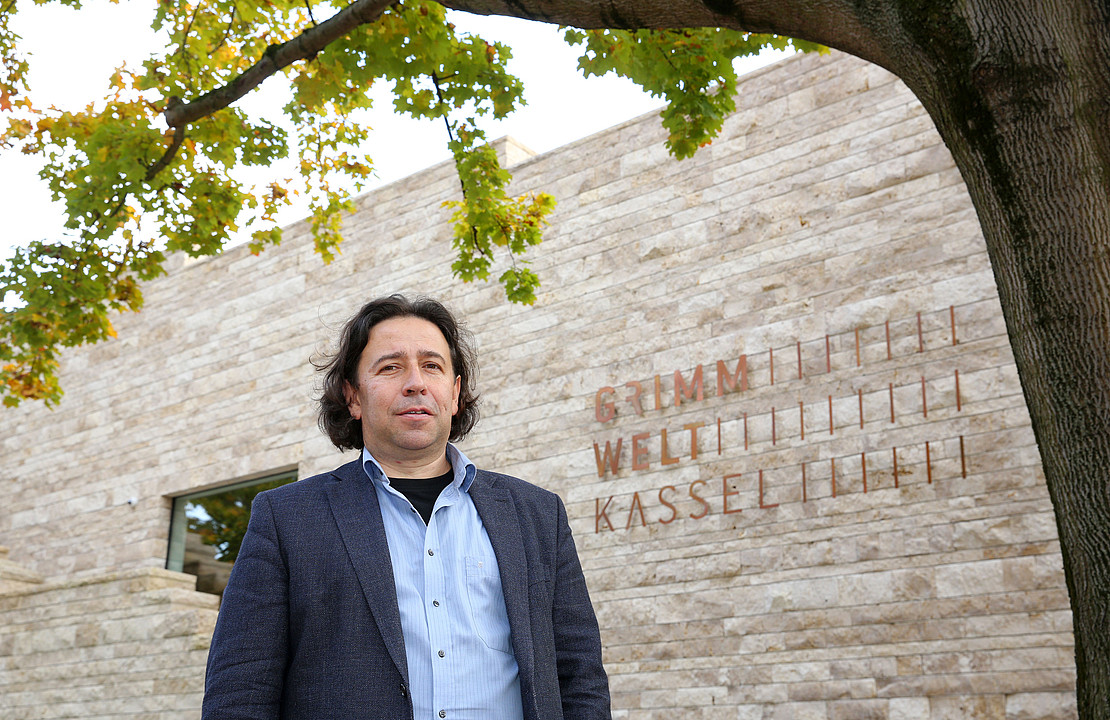Grimm's fairy tales: Researcher discovers unknown original manuscripts
 Image: Berlin State Library.
Image: Berlin State Library. Image: Andreas Fischer.
Image: Andreas Fischer.Ehrhardt, professor of the work and impact of the Brothers Grimm at the University of Kassel, came across the manuscripts while analysing documents from the Grimm estate in Berlin. Among the countless documents in this archive, there are still many that have neither been sorted nor analysed. The German scholar from Kassel, who was recently awarded the European Fairy Tale Award, found manuscripts in which so-called "contributors" sent fairy tales and legends to the brothers Jacob and Wilhelm Grimm, as well as transcripts of fairy tales that the Grimms had people from the public tell them. Among them is the transcript of the ghost story "The Poor Farmer in the Churchyard" („Der arme Bauer auf dem Kirchhof“) by the probably most famous storyteller Dorothea Viehmann. The plot later became part of the compilation under the title „The Grave Mound“ („Der Grabhügel“) In this transcript, Jacob Grimm adopted the dialectal expression of the "Viehmännin" - an interesting insight into the North Hessian dialect of the time.
A version of the fairy tale "The White and the Black Bride" („Die weiße und die schwarze Braut“) in Jacob Grimm's manuscript, here under the original title "The Duck on the Gutter", („Die Ente am Goßenstein“) holds a special surprise. Ehrhardt found numerous proofs in this original version that the material must have been conveyed by Dorothea Viehmann and not, as previously assumed, by the aristocratic von Haxthausen family. The researcher proves this with typical Viehmann phrases, such as a so-called iterative phraseological template with the pattern 'X and X'. Moreover, the motif of a naked woman - in the fairy tale "The White and the Black Bride" the evil stepmother is undressed - is also only found in Dorothea Viehmann tales. Erhardt: "She had a different relationship to physicality than the young bourgeois ladies from the circle of acquaintances of the Brothers Grimm." In a recently published essay, the researcher cites numerous other stylistic, content-related and biographical arguments in favour of Viehmann as a source.
Jacob and Wilhelm Grimm did not create the famous fairy tales themselves, but wrote down what the "contributors" - ordinary people from the community, but also educated people - told them from tradition. Over the course of several revisions, they became the "Children's and Household Tales" („Kinder- und Hausmärchen“) as we know them today. Originally, the Grimms had not planned to publish the stories themselves; instead, they sent their transcripts to Clemens Brentano and Achim von Armin, who, however, decided against publication. In a roundabout way, 46 manuscripts still in Brentano's possession today ended up in the Alsatian monastery of Oelenberg. This collection is now being supplemented by 54 further authentic documents from the Grimm estate.
"This has far-reaching consequences," says Ehrhardt. "There is a persistent belief that there were only a few true original versions and that the Grimms invented most oft hem in order to lend authenticity to the stories. This has now been refuted once and for all."
Ehrhardt published his findings on the creation of the fairy tale "The Duck on the Gutter" /"The White and the Black Bride" in the journal "Fabula".
Contact details:
Prof. Dr. Holger Ehrhardt
Universität Kassel
Tel.: +49 561 804-7455
E-Mail: holger.ehrhardt[at]uni-kassel[dot]de